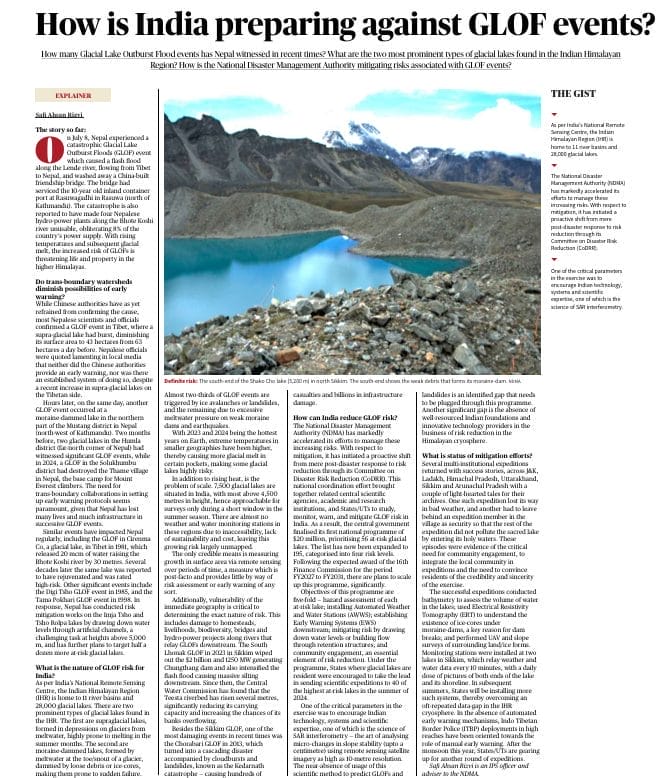

Why in News:
Nepal recently witnessed a major GLOF (Glacial Lake Outburst Flood) event, caused by the breach of a glacial lake formed due to a landslide dam. This highlights the increasing vulnerability of the transboundary Himalayan region—especially for countries like India, Nepal, and China that share interconnected river systems.
In India, the recent Sikkim flash flood (October 2023) was also a result of a GLOF triggered by the breach of the South Lhonak Lake. These incidents emphasize the urgent need for India to enhance its preparedness against GLOF risks through monitoring, early warning systems, and climate-resilient infrastructure.
UPSC CSE Relevance:
UPSC CSE in mains examination has focused on types of disasters and NDMA guidelines in GSIII. A case in point is a following PYQ.
UPSC mains PYQ 2021:
Question: Describe the various causes and effects of landslides. Mention components of the important components of the National Landslide Risk Management strategy.
What is GLOF:
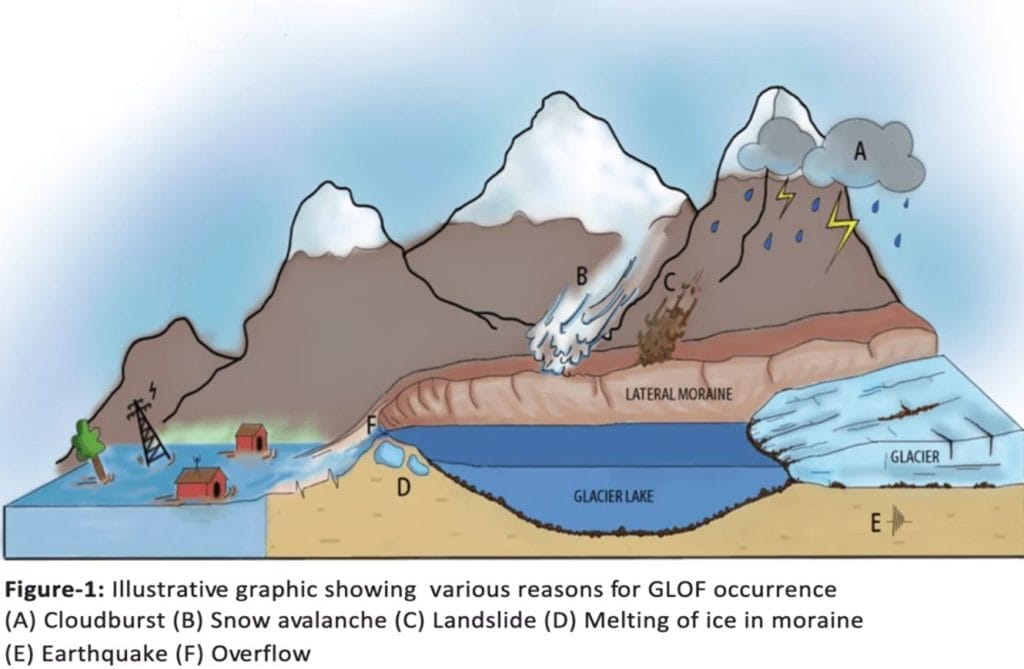
Definition:
According to International Centre for Integrated Mountain Development: A Glacial Lake Outburst Flood, or GLOF, is sudden release of water from a lake fed by glacier melt that has formed at the side, in front, within, beneath, or on the surface of a glacier.
GLOFs have three main features:
- They involve sudden (and sometimes cyclic) releases of water.
- They tend to be rapid events, lasting hours to days.
- They result in large downstream river discharges (which often increase by an order of magnitude).
Factors contributing glacial hazards:
(a) large lake volume
(b) narrow and high moraine dam
(c) stagnant glacier ice within the dam
(d) limited freeboard between the lake level and the crest of the moraine ridge. Potential outburst flood triggers include avalanche displacement waves from:
- calving glaciers
- hanging glaciers
- rock falls
- settlement and/or piping within the dam;
- melting ice-core
- catastrophic glacial drainage into the lake from sub-glacial or englacial channels or supraglacial lakes.
Causes:
Failure of Moraine-Dammed Lake:
Outburst floods in moraine-dammed settings are often caused by the sudden input of material into a lake causing displacement of water and overtopping of the dam.
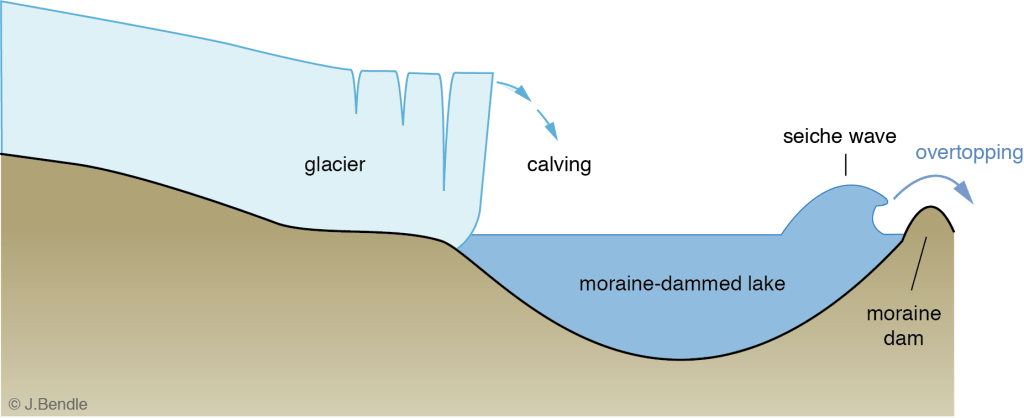
Breach incision
Once overtopped, a process called breach incision can occur. This occurs as water flowing across the dam surface erodes a channel into the moraine, starting a positive feedback process where channel incision allows more water to escape, and the higher discharges leaving the outlet encourage greater rates of erosion.

Case study:
Recent Sikkim GLOF:
South Lhonak Lake is located at North Western part of Sikkim. It is fed by meltwater from the South Lhonak glacier. On 4th October 2023, without warning, a significant Glacial Lake Outburst Flood (GLOF) was released from South Lhonak Lake, located in Sikkim province in North Eastern India, high up in the Himalayas. The outburst flood created a wall of water that swept down the valley of the Teesta River, overwhelming the Teesta 111 HEP dam, which collapsed, releasing a catastrophic flood downstream. It’s impact 42 confirmed deaths and 150 missing individuals. Severe damage to settlements located along the valley. 2,400 people evacuated and 7,600 displaced in relief camps.15 bridges washed away or submerged, along with dozens of roads, including the only highway connecting the state to the rest of India.
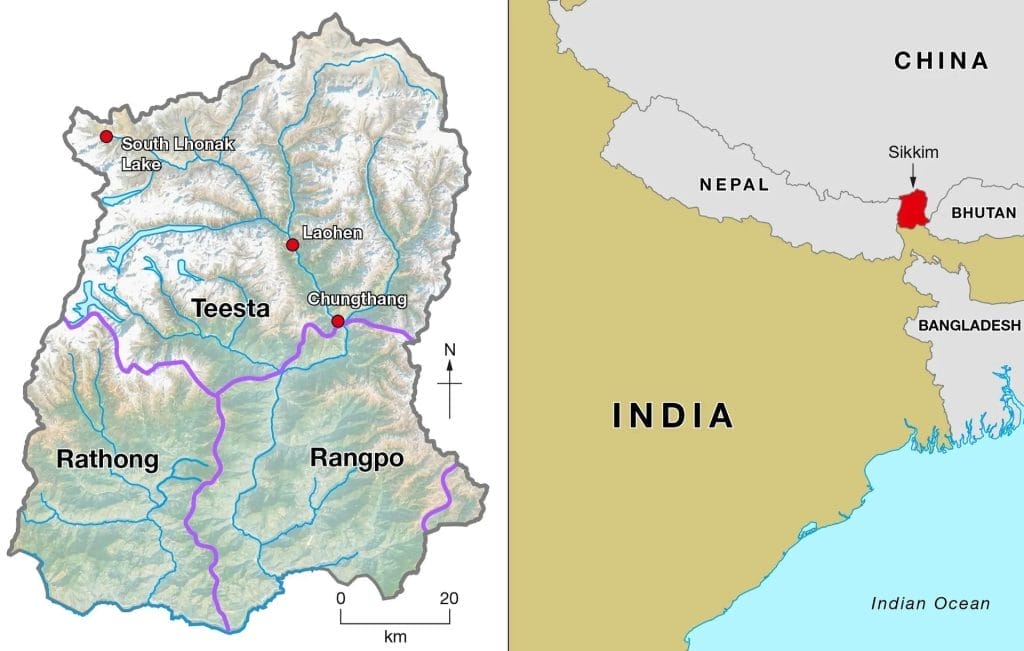
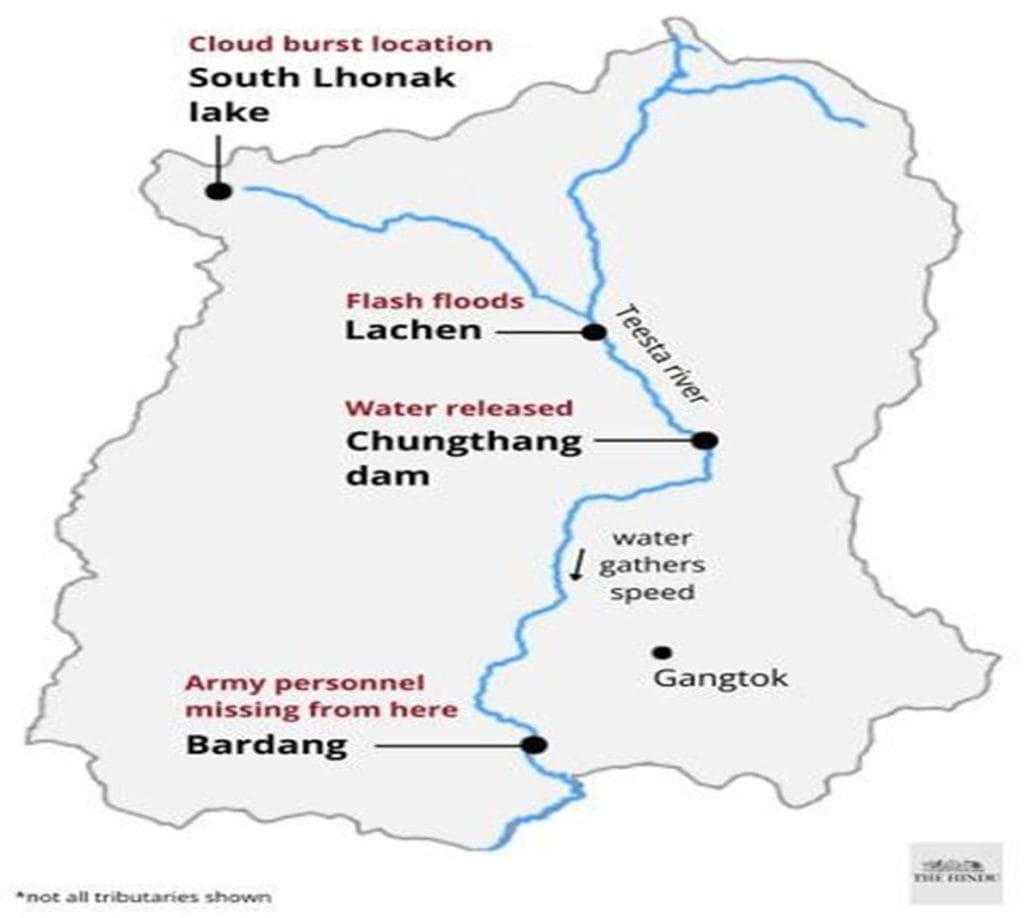
Impacts of GLOF:
- Damage of Infrastructure
- Loss of Lives
- Landslide due to sudden outbreak of high volume of water
- Minor Earthquake
- Floods
Guidelines and Steps taken by GOI to Combat against GLOF:
HAZARD & RISK ZONATION MAPPING
- Disaster Cataloguing and Lake Inventories
- Detailed Hazard and Risk Assessment
MONITORING, RISK REDUCTION & MITIGATION MEASURES
- Risk Reduction Techniques and Models
- Early Warning Systems
AWARENESS & PREPAREDNESS
- Awareness Drive for Specific Target Group
CAPACITY DEVELOPMENT
GLOF MITIGATION PROJECT:
Central Government has approved National Glacial Lake Outburst Flood (GLOF) Risk Mitigation Project (NGRMP) for its implementation in four states namely, Arunachal Pradesh, Himachal Pradesh, Sikkim and Uttarakhand at a financial outlay of Rs.150.00 crore.
The NGRMP project has four components:
- Component I: GLOF Hazard and Risk assessment (elaboration of standardized assessment method and a lake inventory)
- Component II: GLOF Monitoring and Early Warning System (including remote sensing data, community involvement for monitoring, alerting/ dissemination)
- Component III: GLOF Mitigation Measures (Site-specific interventions combining technical expertise and community involvement)
- Component IV: Awareness Generation & Capacity Building (involving stakeholders at multiple levels)

